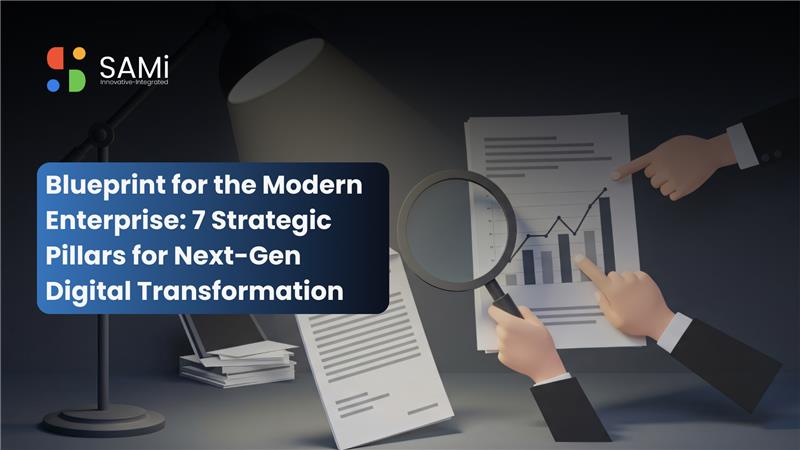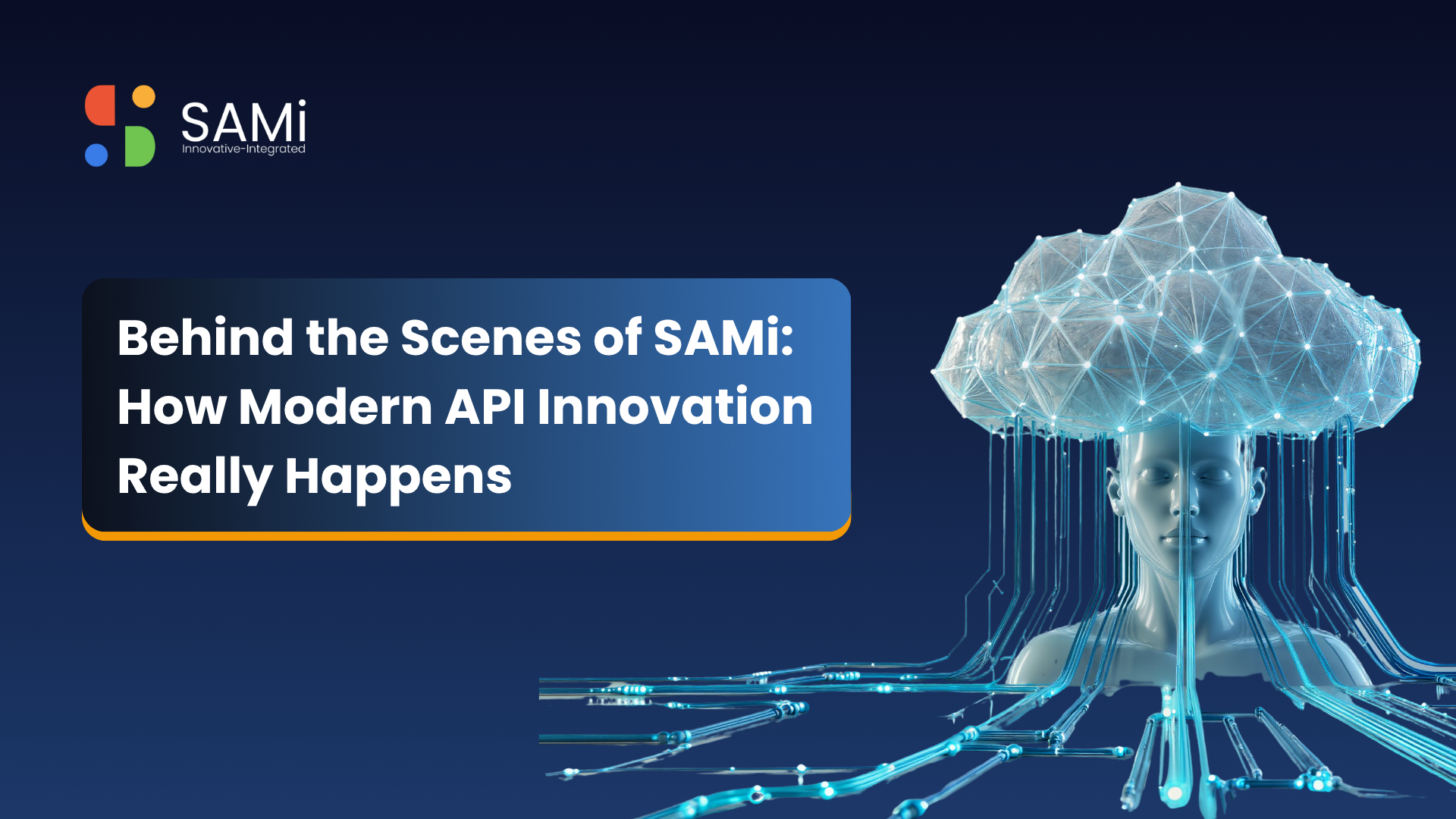The Imperative of Architectural Recalibration
The mandate for digital transformation has fundamentally shifted. For the global enterprise, particularly those navigating the complex, compliance-heavy currents of BFSI and managing decades of technical debt, the challenge is no longer the adoption of technology, but the architectural recalibration of the entire operating model. The era of traditional, project-based digital programs is yielding to the necessity of building intelligence-driven, architecture-first enterprises.
The C-suite CIOs, CTOs, and CDOs must confront the reality that incremental change is insufficient. The goal is to move beyond mere digitization to establish a core capability for continuous intelligence and hyper-agility. At SID Global Solutions, we recognize that this requires a holistic, non-linear blueprint. This document outlines Seven Strategic Pillars that form the foundation of the next-generation enterprise, providing the strategic clarity and architectural depth required to transform legacy complexity into a durable competitive advantage.
The Strategic Context: From Program to Platform
The new competitive landscape is defined by the convergence of AI, the API Economy, and the imperative for real-time data flow. This forces a pivot from managing IT as a cost center to orchestrating it as a value-generating platform. Success is measured by the velocity of value delivery and the resilience of the core systems.
For large enterprises, transformation is a delicate act of evolutionary decoupling—strategically isolating and modernizing components of the legacy core without risking operational stability. This blueprint provides the framework for that strategic stewardship, ensuring that every investment in technology is an investment in a future-proof, intelligent architecture.
The 7 Strategic Pillars for Next-Gen Digital Transformation
Pillar 1: Intelligence-First Architecture
The modern enterprise must be an active, continuously learning entity. This requires an architecture where AI is not a layer added on top, but the core operating layer itself. We view intelligence as the primary driver of the new enterprise architecture.
This architecture is built on a real-time intelligence fabric, where the nervous system is composed of event-driven systems leveraging technologies like Kafka or Confluent. This facilitates event streaming as the default mechanism for data flow, enabling inference-everywhere design. AI models are embedded directly into operational workflows, allowing for real-time decision-making—from dynamic pricing to instant fraud detection. The goal is a unified data environment that supports continuous intelligence, where data is treated as a distributed, real-time asset, ready for consumption by both human and automated agents.
Pillar 2: Platform & API Economy
The velocity of innovation is now determined by the ability to productize core capabilities. Platformization is the strategic imperative that abstracts infrastructure complexity and empowers product teams. We believe the future of enterprise IT lies in treating internal capabilities as products with defined SLAs and clear ownership.
The externalization of these capabilities is driven by the API Economy. APIs must be managed as monetizable, versioned, and documented business products, not just technical interfaces. Our perspective on API-led modernization emphasizes a strategic shift: the API is the new contract between the business and its ecosystem. This requires robust governance and lifecycle management, focusing intensely on the developer experience to accelerate both internal and external monetization and ecosystem expansion.
Pillar 3: Data Trust & Governance
In the regulated environment of BFSI, Data Trust is the non-negotiable foundation for all AI and automation initiatives. The integrity of the data directly determines the velocity of decision-making.
This pillar demands a move toward proactive, automated governance. This includes implementing robust data quality and lineage tools that provide an auditable trail from source to consumption, essential for stringent BFSI compliance. We see AI readiness as a function of data integrity; if the data is untrustworthy, the AI models built upon it will fail to deliver value. While the debate between data fabric vs. mesh continues, the strategic focus must remain on establishing unified access control and a common semantic layer that ensures consistency and compliance across all data domains.
Pillar 4: Cloud-Native Modernization
Cloud-native principles are the architectural enablers of resilience and speed. This involves the decomposition of monolithic applications into independently deployable microservices, leveraging Kubernetes for orchestration, and adopting serverless computing for optimized resource utilization.
However, modernization must be executed with surgical precision. Our architecture-first modernization approach focuses on achieving zero-downtime evolution by strategically refactoring high-value workloads and implementing rigorous SRE (Site Reliability Engineering) practices. This is coupled with a deep observability strategy the integrated trifecta of logs, metrics, and traces—to provide the real-time visibility necessary to manage the complexity of distributed systems and ensure continuous resiliency.
Pillar 5: Human-Centric Enterprise Experience
Transformation must radically simplify the daily work of employees and the interaction of customers. The goal is to achieve a Human-Centric Enterprise Experience that maximizes productivity and minimizes friction.
This is accomplished through the deployment of intelligent UX and automated workflows. We believe the most significant multiplier of productivity is the strategic deployment of agents—AI-powered GenAI copilots—that automate routine tasks, simplify access to complex legacy systems, and provide real-time decision support within the digital workplace. Our POV on human-centric productivity is that success is measured by the removal of friction and the resulting uplift in employee time-to-value, not just the deployment of new features.
Pillar 6: Security-by-Design
In a world where the perimeter is obsolete, security must be an architectural mandate, not a final checkpoint. The strategic imperative is the adoption of a Zero Trust model across the entire enterprise.
Security-by-Design means embedding security controls into the development lifecycle (DevSecOps). This includes advanced IAM (Identity and Access Management), pervasive encryption, and continuous monitoring. For BFSI, this means implementing BFSI-grade compliance controls and viewing governance as a transformation enabler, not a constraint. The ZTA model requires continuous verification of every user, device, and application, ensuring that access is granted based on the principle of least privilege and that the security posture is constantly validated.
Pillar 7: Leadership, Culture & Operating Models
The most sophisticated architecture will fail without a corresponding evolution in organizational structure and governance. We view transformation not as a project, but as an operating model change.
This requires the adoption of BizDevOps, integrating business, development, and operations into unified, cross-functional value streams focused on measurable outcomes. Transformation governance must pivot from rigid, annual budget cycles to an iterative roadmap focused on value realization. This includes talent modernization upskilling and aligning teams to the new platform-centric model and fostering a culture of controlled experimentation. Leadership must de-risk the transformation by funding capabilities and platforms, ensuring that the organizational structure supports the architectural vision.
The Intelligent Enterprise of Tomorrow
The convergence of these Seven Strategic Pillars defines the Intelligent Enterprise—a self-optimizing, continuously learning entity capable of anticipating market shifts and delivering hyper-personalized experiences at scale. This blueprint is the strategic map for C-suite leaders committed to architectural stewardship.
At SID Global Solutions, we help enterprises build intelligence-first architectures, platform ecosystems, and modern operating models that accelerate real transformation. If you’d like to explore this blueprint deeper, we’re always open to a conversation.




